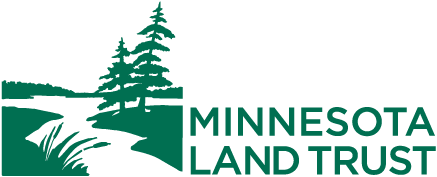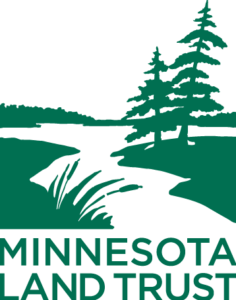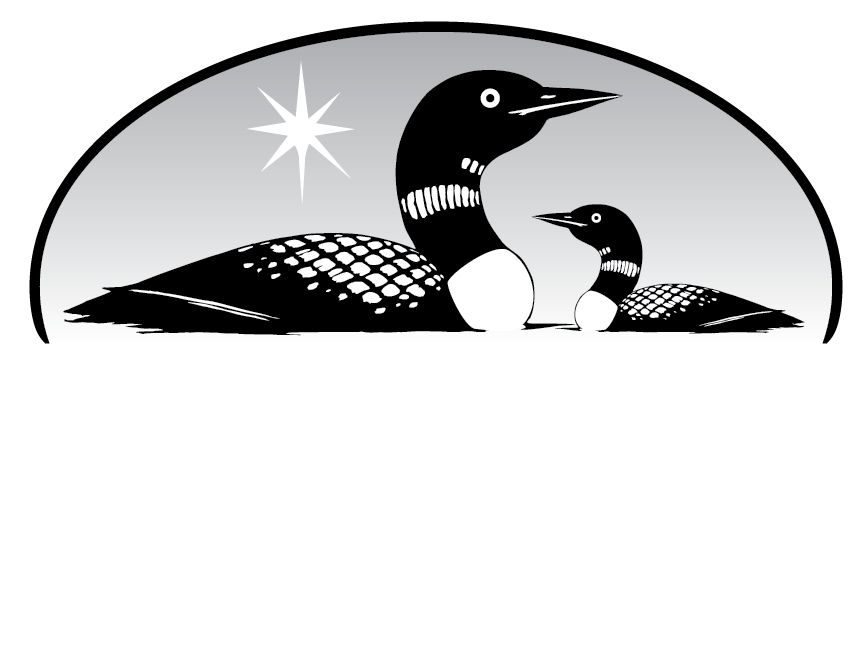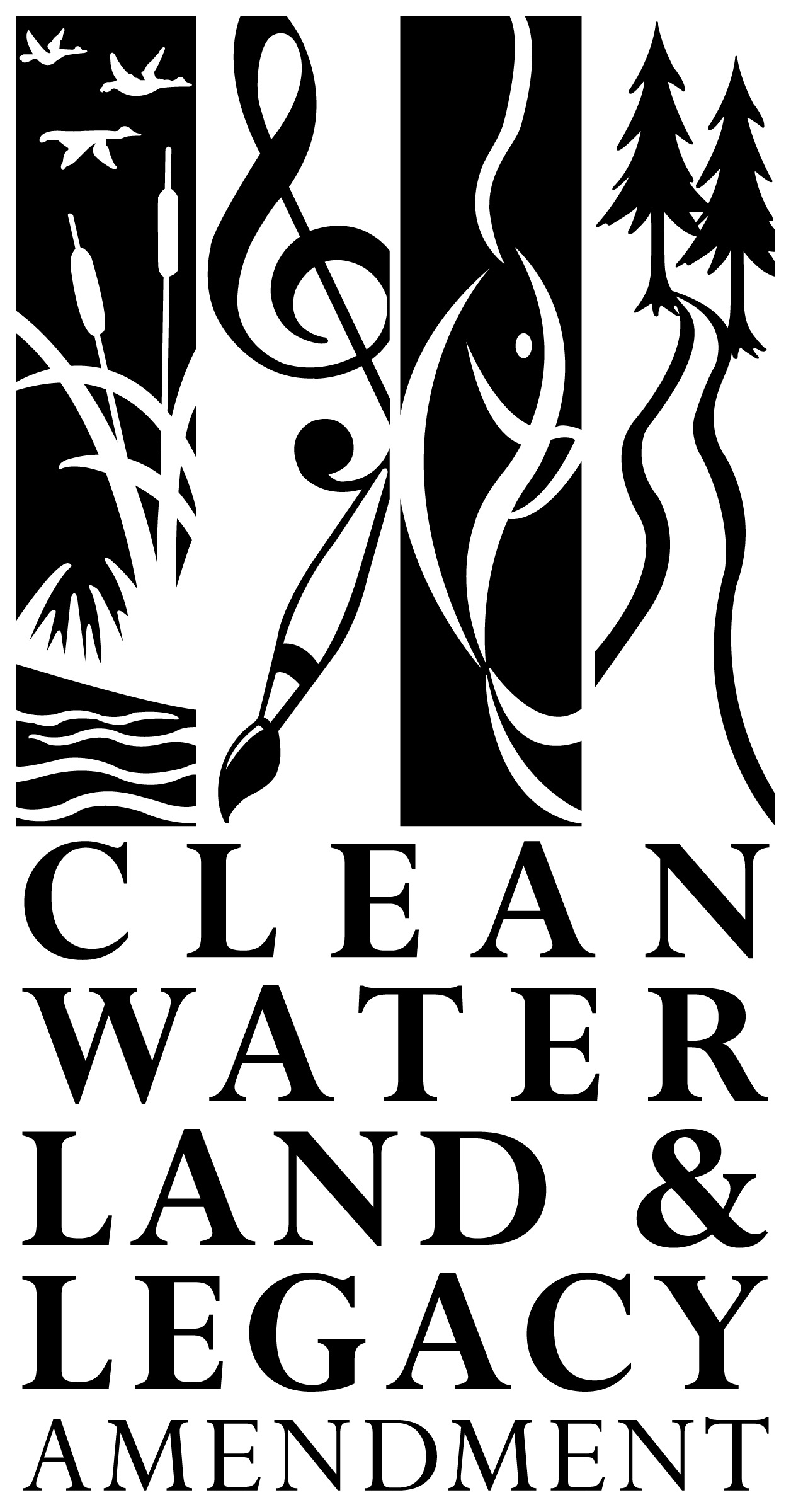Designed exclusively for the Minnesota Land Trust, these illustrations by artist Jade Lent depict Minnesota’s diverse habitats and wildlife. Each image was thoughtfully designed to include a human element, reminding us of the reciprocal relationship between people and nature, and our responsibility to preserve and tend it carefully. When the images are placed next to each other, Minnesota’s important waters connect them. Learn more about the inspiration for each card below.
The Minnesota Land Trust protects and restores Minnesota’s most vital natural lands to provide wildlife habitat, clean water, outdoor experiences and scenic beauty for future generations. Learn more about the Minnesota Land Trust.
Mallard & Prairie Potholes
This illustration by artist Jade Lent depicts a mallard (Anas platyrhynchos) swimming in a shallow basin in the prairie pothole region. The area’s distinctive topography makes it an ideal nursery for waterfowl earning it the name, “America’s duck factory.” Nearly half of North America’s ducks originate in the prairie pothole region.
To date, 50% of wetlands have been lost, leading to poor water quality, increased flooding, threats to wildlife, and more urgency than ever before to preserve and restore these critical habitats.
The hen house in the background of the image reminds us of the reciprocal relationship between people and nature, and our responsibility to preserve and tend it carefully.
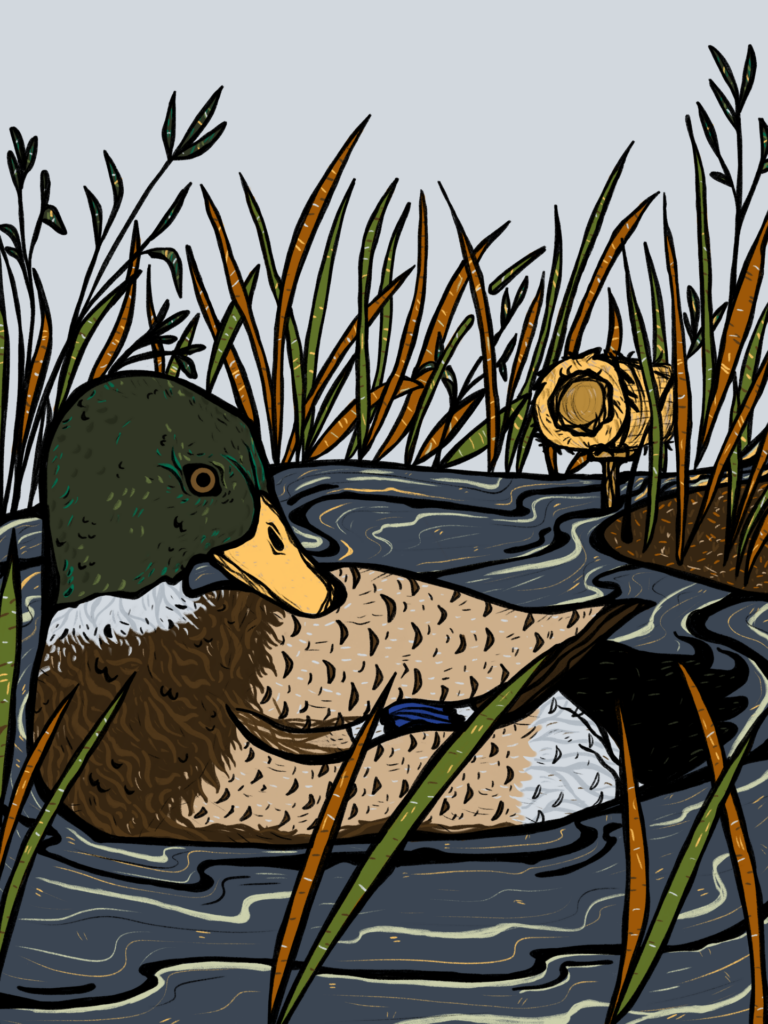
Rusty Patched Bumblebee & Prairie
This illustration by artist Jade Lent depicts a rusty patched bumblebee (Bombus affinis) collecting pollen from a purple coneflower in a vibrant restored prairie. The rusty patched bumblebee was listed as federally endangered in 2017.
Ninety-nine percent of native prairies have been lost due to agriculture and development, making it one of the most endangered ecosystems in the world and threatening hundreds of species that rely on them. That includes animals from the tiny western harvest mouse to the bison, North America’s largest mammal, and hundreds of pollinators that are critical for healthy plant communities and food production, including fruits, vegetables, nuts, seeds, oils, coffee and chocolate. The Minnesota Land Trust has completed over 360 projects preserving native prairies and grasslands and helped restore over 3,000 acres of prairie across Minnesota.
The wooden fence in the background of the image reminds us of the reciprocal relationship between people and nature, and our responsibility to preserve and tend it carefully.
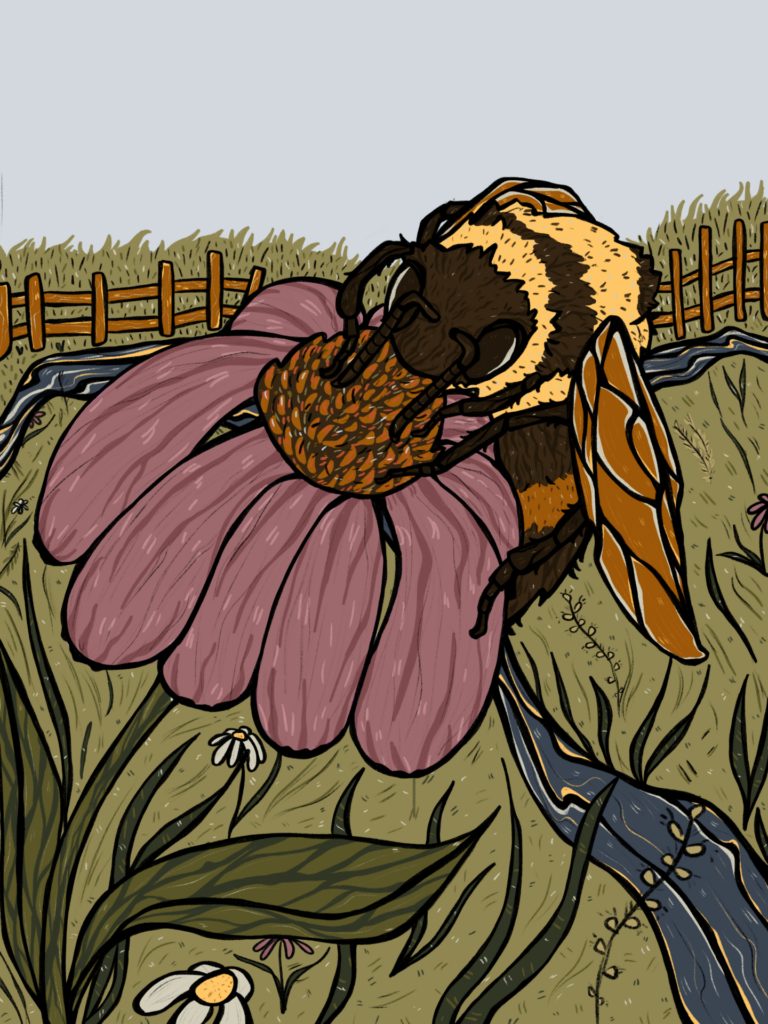
Gray Wolf & Northern Forest
This illustration by artist Jade Lent depicts an important keystone species, the gray wolf (Canis lupus), in a Minnesota northern forest. Keystone species are critical for maintaining the balance of an ecosystem and wolves require large tracts of uninterrupted forest which also support higher levels of biodiversity than smaller, parcelized forests.
Forests provide clean, cold water, carbon storage, oxygen, and erosion control, and regulate the water cycle. However, these ecosystems are increasingly under threat from development and agriculture; non-native plant species destroying native plant biodiversity; long periods of fire suppression; and the effects of climate change causing more frequent and severe wildfires, floods, and pest outbreaks. With eighty percent of land-dwelling species relying on forests, it’s critical that we protect and restore them.
Protecting forests and building expansive natural land sanctuaries is a primary objective of the Minnesota Land Trust. Approximately half of the land we protect annually is forest and woodland, and half of protected properties are located a quarter mile or less from other protected lands. The trail markers in the background of the image remind us of the reciprocal relationship between people and nature, and our responsibility to preserve and tend it carefully.
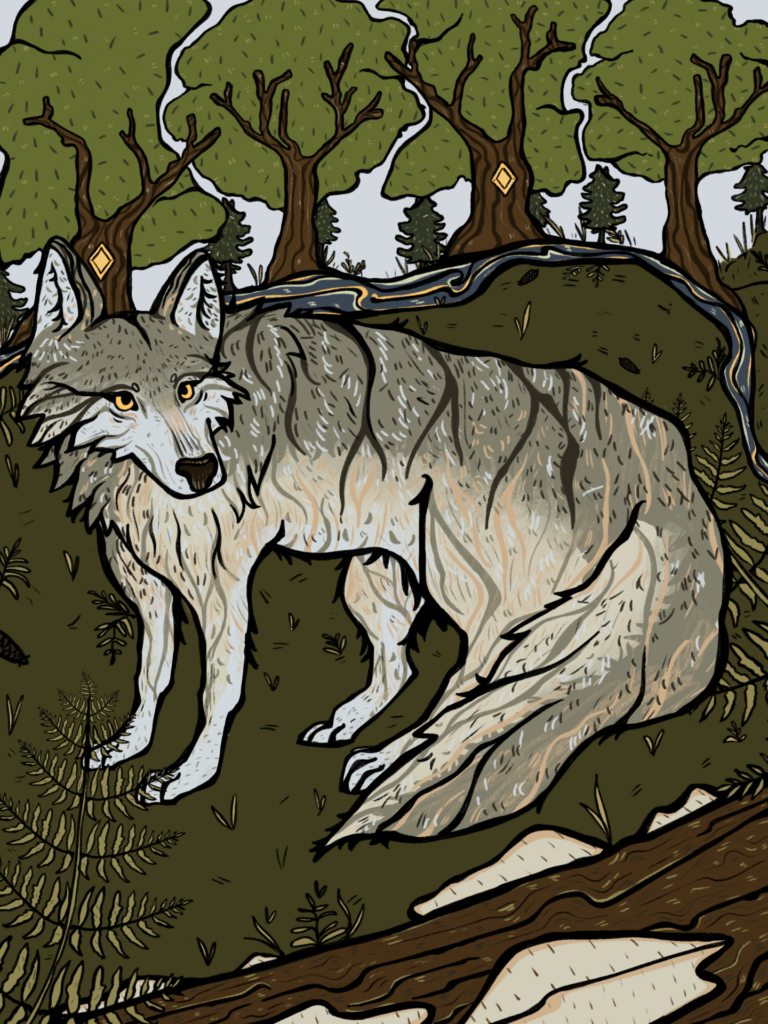
Great Gray Owl & Boreal Wetlands
This illustration by artist Jade Lent depicts an iconic great gray owl (Strix nebulosa) in a northern Minnesota boreal wetland or bog. Commonly populated by black spruce and tamarack stands, these habitats are rich with one of Minnesota’s most unique natural features, peatland.
Over 6 million acres of peatland cover more than 10% of the state, surpassing every other state except Alaska. Undisturbed peatlands represent the largest natural carbon store globally, grounding more carbon than all other vegetation types in the world combined, making them an important natural feature to protect.
The owl boxes in the background of the image remind us of the reciprocal relationship between people and nature, and our responsibility to preserve and tend it carefully.
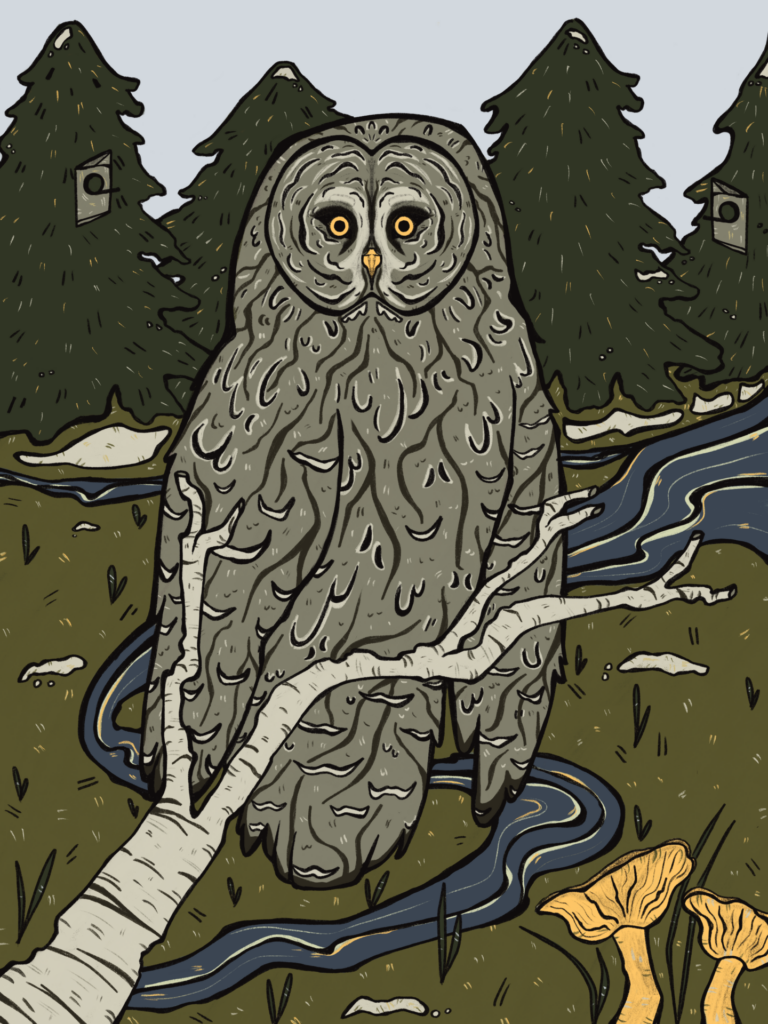
American Bittern & Water
This illustration by artist Jade Lent depicts an American bittern (Botaurus lentiginosus) foraging among protective native shoreline vegetation beside a lake or pond.
Threats to sensitive aquatic habitats include pollution from extractive industries; loss of prairies, forest, and wetlands for agricultural use or residential development; disruption of the natural ecology from non-native species like zebra mussels; and climate change-driven droughts interspersed with severe precipitation events that wash more sediment and nutrients into waterways.
Almost all of our protection and restoration efforts benefit lakes and rivers. That includes over 500 miles (and counting) of protected shoreline and over 70% of protected properties located a quarter mile or less from a river or lake.
The boot print in the background of the image reminds us of the reciprocal relationship between people and nature, and our responsibility to preserve and tend it carefully.
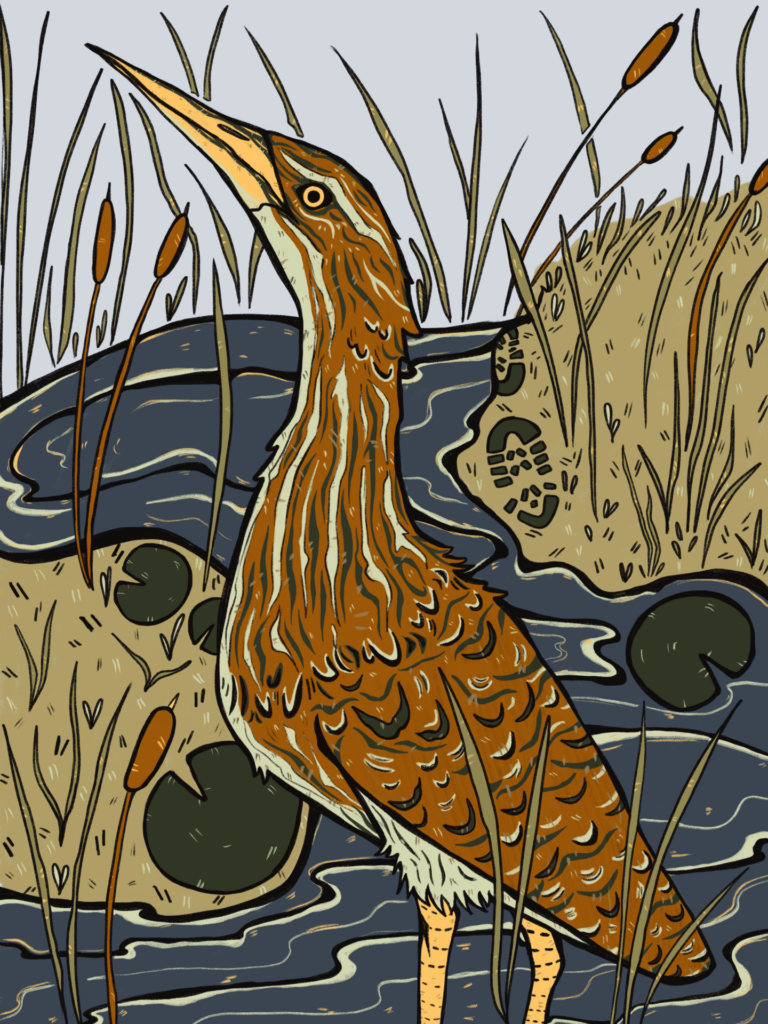

About the Artist & Collaboration
Jade was born and raised in Glenwood, Minnesota. Growing up in the countryside, she was surrounded by nature and creative souls— including family members—who inspired her to pursue a career in the arts.
As a university student majoring in Studio Art, Jade teamed up with the Minnesota Land Trust to design five art posters for the senior student showcase. The purpose of the pieces is to raise awareness about wildlife conservation and engage the public in a creative and meaningful way.
Interview with Jade Lent
Why did you want to work with the Minnesota Land Trust for this project?
I knew I wanted to collaborate with a non-profit organization tied to conservation because of what my art focuses on. The Minnesota Land Trust had been on my radar since I was a child, so I thought I’d take a shot in the dark and send an email to see if they would be up for a collaboration of sorts. I proposed making posters for their fundraising efforts to restore wildlife and the habitats they reside in.
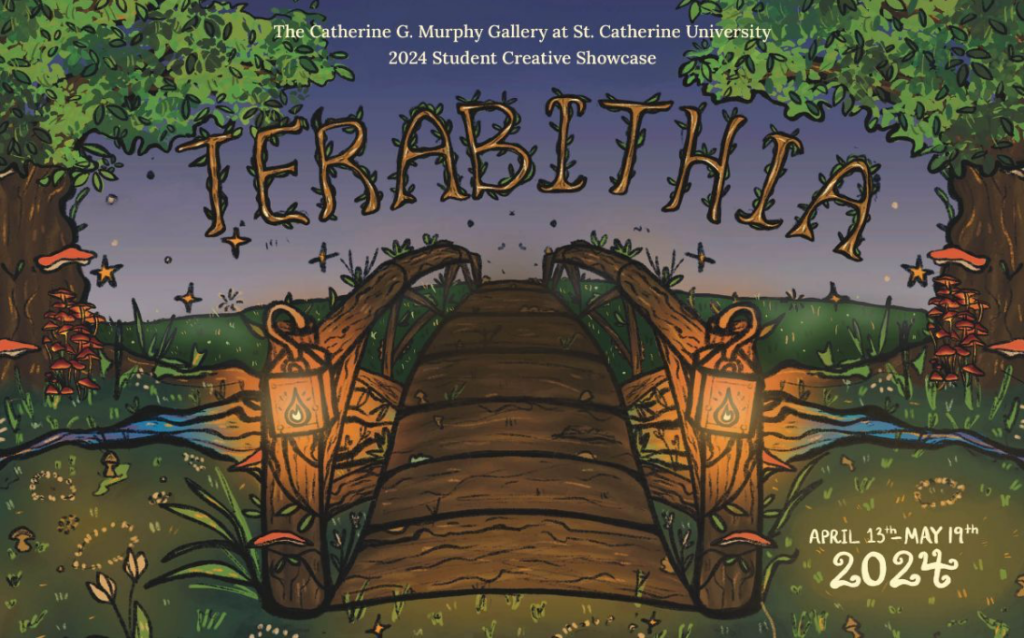
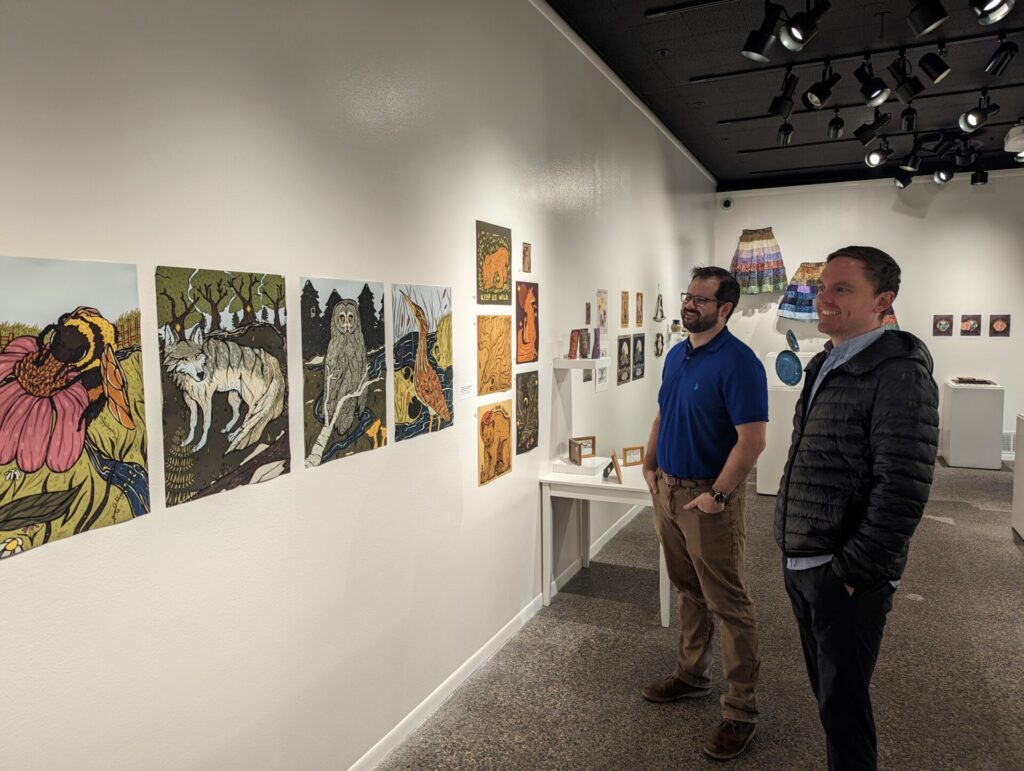
Talk a bit about the process of developing these pieces and collaborating with the Minnesota Land Trust.
Developing these posters with the Minnesota Land Trust was a great deal of fun. There was back-and-forth collaboration and sharing ideas of what would look best and how we would diversify each poster and its subject. Each poster is concentrated on a separate ecosystem and animal that is commonly seen there.
When approaching these subjects I wanted to do my best to make the images cohesive while including features and design choices that characterize the unique aspects of each ecosystem. Additionally, some of the wildlife featured in the posters are significant in Dakota/Lakota and Ojibwe culture. Owls symbolically represent protection, wisdom, and rebirth. While wolves are a common symbol of wisdom, unity, and guardianship.
All five of the posters are connected by the visual imagery of water. Water symbolically, metaphorically, and quite literally connects all living things on this earth so there was no question that the common visual should have water incorporated into each ecosystem. It is a sign of rebirth and the cycle of life.
Where do you find creative inspiration for your artwork generally?
I am an artist who values savoring moments in time, and my work is shaped by both personal memories as well as my attempt to preserve my perspective of the natural world. I am inspired and fascinated by nature and its inhabitants. They constantly remind me of where my roots were planted when I began my journey as an artist. My work is inspired by childhood memories of growing up in a rural area and being surrounded by the beautiful countryside.
It comes from the values of wanting to protect and preserve the world we live in and the same one I grew up in. I create to evoke a sense of nostalgia while adding a piece of myself to these illustrations. In my illustrations, I am able to channel my values and draw inspiration from the miracles around me. My art is a way of documenting what I see in the world around me, while bringing awareness to the world, in the hopes of protecting it.
Talk a bit about your preferred mediums, what tools you used, and how you put together the five art posters for the Minnesota Land Trust.
Currently my preferred medium is digital drawing—more specifically, drawing on my iPad with an Apple pencil in a program called Procreate. I choose to create digitally because of the flexibility—the files can be transferred wherever I need to send them. Additionally, whenever I need to create, all of my drawings and resources are in one place essentially. This was the main reason I worked digitally with the Minnesota Land Trust, because of how flexible it would be to send over rough drafts, sketches, and color palettes and it is a lot easier to make changes.
When it came to the five posters for the Trust, I had mini rough drafts of them all set up so I could map where the details in the background and foreground would line up. This would help the presentation of the five posters when they would be hanging side by side and how the river throughout the posters would flow flawlessly between the ecosystems.
How would you describe your art style? How would you describe the style of the 5 art posters?
I would describe my style as digital linocut printmaking. This is not a real art term in any sense, but it’s the closest way I could describe what my art style is. As I was in university, I fell in love with the look and process of printmaking. It felt like I was grounding myself when participating in that type of art. Though ask anyone who does printmaking and they’ll tell you how much time and money it takes to create with the medium.
So I tried to emulate the look of a linocut print when working digitally and my style sort of stemmed from that. It was a process I could do while saving time and money and that’s why my line work looks almost like it could be carved. Don’t get me wrong, when I have the resources I still love traditional linocut and how satisfying it can be to go through each step in creating a print, but my digital linocut style is what I am currently working with.
What was the most challenging thing about this project? What was the highlight?
The most challenging aspect of this collaboration for me was determining how each of the posters would interact with each other. From an early stage, we knew we wanted to incorporate water flowing between all five of the posters but it was a lot easier said than done. Each poster had its separate ecosystem and land, as well as, diverse ways the land was presented and how the wildlife interacted with it.
This became quite a challenge when wanting a stream to go through each poster, connecting each time it would transfer to the next. There were many iterations and sketches of how I would incorporate the water, but luckily in the end I found my flow! 😊 The highlight of this project was getting to the finished product and showing the posters in my senior gallery exhibition, as well as showing the finished posters to the Minnesota Land Trust!
What do you hope people experience when they view these pieces?
I hope people find joy when looking at these posters. There are a lot of little details I put into them, so I hope that does not go unnoticed. Each of these posters is supposed to represent the efforts of conservation and what restoring habitat and land can do for wildlife. I hope that viewers who see these posters, whether that be with fundraising material or on a magazine cover, stop and think about the positive impact they can make by supporting these organizations that help preserve this earth. That is all I had in mind when designing these posters.
You recently graduated from college. What’s next for you?
After graduating with a BA in Studio Art with a concentration in Graphic Design and minoring in Integrated Marketing Communications and Design, I am currently interning at a print shop in my local town for the rest of the year. On the side, I am dabbling in some freelance projects, art pop-ups, and have an upcoming gallery show this September at the Minnesota Valley National Wildlife Refuge Confluence Gallery. After my internship ends at the end of this year, I hope to find a job with an organization or group that focuses on conservation.
Find Jade Online
- Instagram: @jadegreendesigns
- Portfolio: https://jadelent.myportfolio.com
